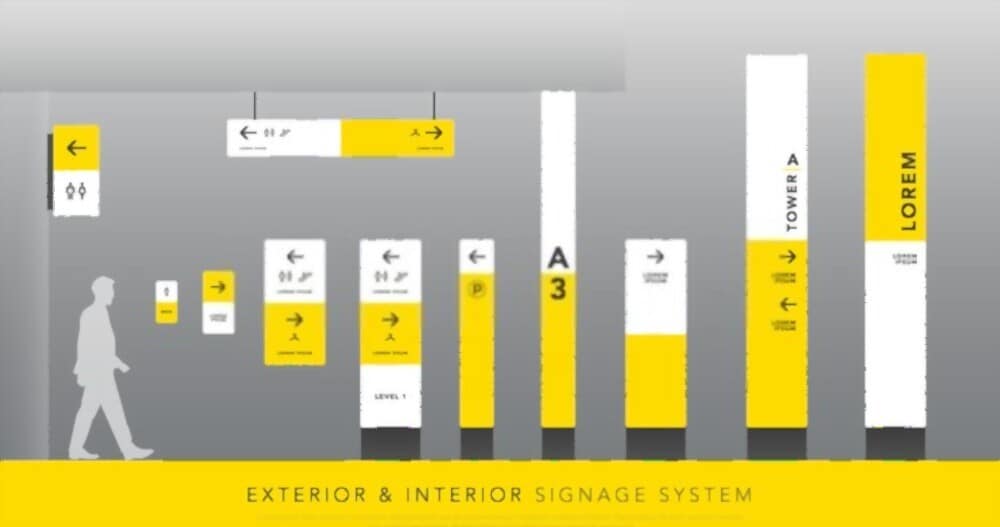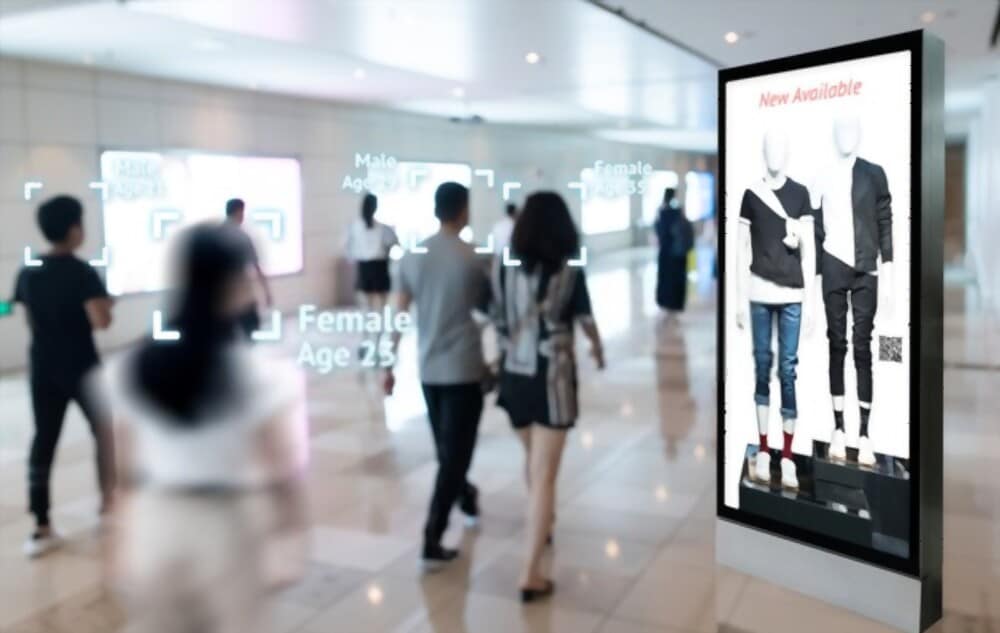Signage in UX Discipline
According to the International Association of Signmakers, 49% of shoppers who come to the store "come across" an attractive sign. At the same time, 17% of them did not plan any shopping on that day at all. According to numerous studies, even the simplest facade sign increases sales by 15%. The increase in sales in 21 retail outlets, where there were changes in signs on the facade of buildings, ranged from 3 to 24%.
What is Signage?

Signage is any kind of visual graphics created to display information to a particular audience. This is typically manifested in the form of wayfinding information in places such as streets or inside/outside of buildings. A sign is a window into the world of goods and services, the success and prosperity of its owners depend on how competently and professionally it is executed.
Signage is an important means of publicity in modern society. Taking outdoor signage design as an example, signage manufacturers will briefly analyze the design ideas of signage production. When the designer is creative, he must conduct some investigation, analysis, and prediction, and then work out the graphics, language, color, object, and publicity aspects of the logo design on this basis. Through investigation and research, the location size of the logo design is determined according to the distance, perspective, and environment. According to the specific environment, the suitable outdoor advertising shape can be selected, and it must be coordinated with the background of the environment.
Types of signage
There are many different types of signage, and it has existed for thousands of years. Most modern signage relies on words, often in tandem with images, but a great deal of historical signage used only images, and much modern signage geared towards an international audience also omits text entirely. Now that we have an overview of the signs that you need and which you should absolutely observe and before you start ordering, it is time to look at the different types of signage.
1. Hanging banners
A hanging banner is one of the simplest and most effective types of signage that you could hang. Because they are available in durable and waterproof vinyl and are also cheap.
2. Banner frame
However, if banners cannot be hung, a banner frame is the best option. They are portable, easy to set up, and can be moved from one event to another.
3. Floor graphics
Floor graphics can be another extension for your event. They are also a great solution for guiding event-goers with directions to the important locations of an event.
4. Table signs
If there isn't a lot of space, why not use the furniture as signage? Table signs are great for weddings and conference registration tables. But branded covers are also a good alternative.
5. Hanging ceiling display
How often do people really look straight up at the ceiling? Well, as long as there is a huge ceiling display with a special brand message above the heads of the visitors, the visitors are sure to look up.
6. Digital signs
We've already talked about digital signage in this article, and for good reason. They are expensive, but impressive nonetheless, and can be used for any occasion.
7. Exhibition stand
Even if an exhibition stand is not a sign per se, it has not prevented several exhibitors from using it as such. Exhibition stands are a great way to free up a smaller corner for business when they are being used at a conference.
8. Backdrops
If you've ever been to a concert by your favorite band, you've probably seen some impressive backdrops. Because they are not only particularly good for a music event, they also serve as a selfie wall.
9. Vinyl sheeting
Almost anything made of vinyl can be turned into a sign. You've probably seen a car or two covered with it, but the material works on any soft surface you can think of.
10. A-frame
If you want something less swaying like a banner frame, then try the good old A-frames. It really takes more than just a gust of wind to knock down the frame and also offers plenty of space for important information.
Why Is Signage So Important for Business Owners?

Have you often asked yourself and others, "Why is signage so important?" When you are shopping in the mall or at an outdoor shopping center, one of the first things you will notice is a plethora of different signs outside of each establishment. These signs make it possible for you and all the other shoppers to easily locate different stores that you are interested in visiting based on what they are selling. Signage is so important because it allows different businesses to differentiate themselves from the other establishments while branding their businesses.
Signage is a must for any business. When the proper signs are not being used by business owners, those business owners are likely missing out on a lot of traffic, which means they are making less money, too. If you were wondering, "Why is signage so important?" now you know some of the most important reasons to invest in it for your own business. When you select the right signs and use them, you can get more foot traffic, make consumers aware of special deals you are offering, and strengthen your brand even more.
The difference between Advertising and Signage

To understand the difference between signage and an advertisement and not face problems from the antitrust service, you need to clearly define the concepts of each of the terms, separating them from each other.
What is advertising?
The Federal Law "On Advertising" defines advertising as information disseminated in a preferred way, in any form, and using any available means. Advertising is not addressed to someone in particular, but to an indefinite circle of people. Its main goal is to draw attention to the advertised product, generate interest, and also promote the product to the market.
Advertising acts as an object of advertising and carries information about a specific product. It will take an average of two to six months to coordinate outdoor advertising with local authorities. In addition to obtaining a special permit, you need to be prepared for the recommendations of the city improvement authority. An important factor is the multi directionality of advertising and signage, as well as disparate monetary costs for the manufacture of each of them.
What is a sign
A sign is a board or billboard that contains the information necessary for the consumer. Each seller is obliged to provide buyers with information that reflects the name, geolocation, schedule of the organization, as well as data about the products available for sale. The information is also not addressed to anyone personally. It is placed for an indefinite circle of people.
If there is no advertising data on the sign, then it cannot be considered an advertisement. It follows from this that the sign as a visual sign only introduces consumers to the product, but does not offer to buy them, does not express their advantages, and does not distinguish a certain product from others. Therefore, the sign is not an advertisement, since it does not carry an advertising message in its functionality. No permission is required to place the sign. The information that is indicated on it without fail is regulated by the Law "On the Rights of Consumers".
Even at the stage of developing the layout of the sign, you should carefully read the legislation in the field of advertising and information from the antimonopoly service, so as not to cross the line between information and advertising. The design of the sign can be made for every taste. This does not affect the format of the transmitted information in any way.
The Relationships between Signage and UX.
Signs and images are surrounding us, subliminally imparting to us in a visual, hear-able, and material language. For instance, we realize that a red octagon signifies "stop," and that an alarm implies crisis. The investigation of signs and images, their utilization and translation, is called semiotics, and semiotics is a vital component of user experience (UX) on the web. By seeing how, and what, the images on your site convey to a client, you can plan a consistent user experience that at last forms customer trust, and results in transformations.
The language of signs on the web advises our day-by-day experience regarding the web. It is set up to such an extent that a considerable lot of us may not perceive this language when we experience it. Semiotics on the web incorporates signs like the burger image, account image, store finder image, and search image, which are regularly utilized images that individuals comprehend. They are known pointers that have been offered importance to make getting to data snappy and easy.

